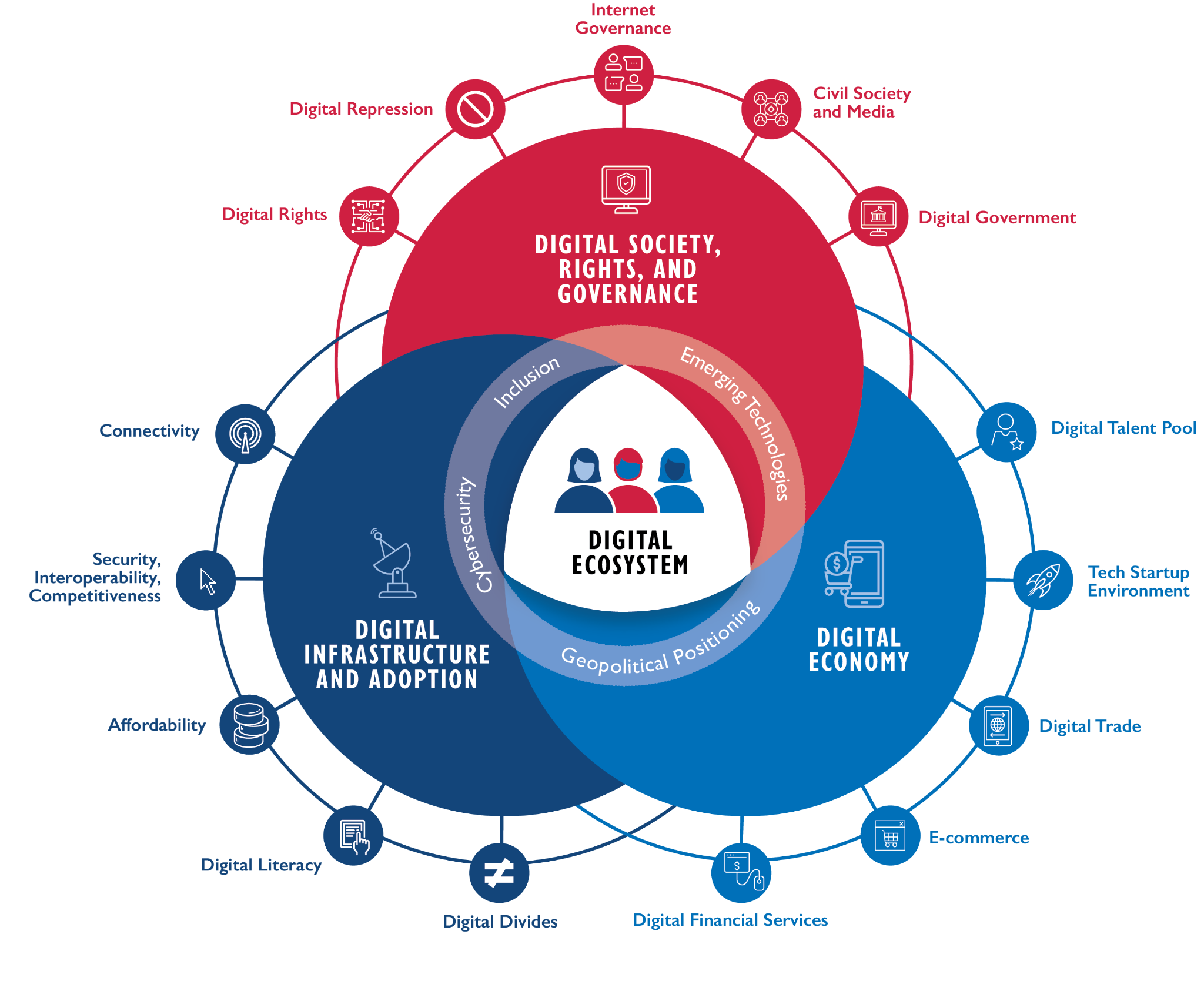Let us know what type of content you'd like to see more of. Fill out our three question survey.
The Digital Ecosystem Country Assessment (DECA) has Spurred Innovative Digital Development Around the World
Mar 30, 2023
In 2016, the Government of Colombia and the Revolutionary Armed Forces of Colombia (FARC) brokered a peace accord that ended nearly five decades of internal armed conflict. After years of reconciliation and peacebuilding efforts, however, new emerging threats to civil society, while digital, have the potential to incite physical violence, according to findings in a 2020 Digital Ecosystem Country Assessment (DECA) report published by the U.S. Agency for International Development (USAID) and DAI’s Digital Frontiers project. The report recommended that USAID invest in cyber hygiene programming in Colombia to assess and improve online and offline safety. Today, USAID Colombia has partnered with USAID’s Digital APEX project to build just this type of capacity.
As more USAID Missions like Colombia’s grapple with the emerging opportunities and challenges of our digital world, the Digital Strategy is shaping the Agency’s response. To design policies and programs that take advantage of technology, stakeholders need to first understand the building blocks of a country’s digital landscape. The DECA, a cornerstone of the Digital Strategy, is helping development practitioners to do just that.

Photo: Hanz Rippe/Paramo Films for USAID.
How the DECA was Born
The DECA concept emerged from a close working partnership between USAID’s Technology Division within the Innovation, Technology, and Research (ITR) Hub and the Digital Frontiers team, which, together, set out to define the digital ecosystem. As part of the initial implementation of USAID’s Digital Strategy, the division worked with Digital Frontiers to design and pilot the DECA beginning in the Fall of 2019. After two years of piloting and iterating the methodology in four countries, the DECA became not just a standalone assessment, but a versatile and broadly applicable tool. Building on these pilots, the team developed the Digital Ecosystem Framework to better explain the concept to the Agency and its partners. The framework now guides the whole of USAID’s digital development approach.
The joint USAID and Digital Frontiers team has or will conduct 19 additional DECAs for a total of 23 by mid-2024. This diversity of DECAs has encompassed conflict and crisis zones, countries with a large humanitarian aid presence or heightened security environment, and regional Missions covering multiple countries. After each assessment, the team documented technical processes and created internal templates and research tools to standardize the process. USAID saw the value in this collection of internal documentation and the idea for the DECA Toolkit was born. Today, the toolkit empowers Missions to conduct a robust DECA through their existing partnerships that is neither confusing nor overly complex and allows Missions to tackle their priorities.

Ideas Born of the DECA
The DECA has spurred innovative thinking. In Serbia, the DECA helped USAID staff think about how to incorporate digital development in new and existing activities. For example, DECA research revealed a nascent startup environment in need of institutional nurturing. As a result, USAID recently advocated for the legal recognition of angel investors and tech startup companies in Serbia. Additionally, USAID utilized DECA findings to incorporate digital into its new Country Development Cooperation Strategy (CDCS) for Serbia.
“[The DECA] was planned as a comprehensive effort to elevate our knowledge and capacity for the digitalization context in which we operate,” said Sasa Djureinovic of USAID Serbia. “[It had] good timing—we were developing our CDCS, so we could incorporate the aspects that were covered by DECA. [An] excellent opportunity to complement our knowledge, which we might not have been able to do otherwise.”
The DECAs also continue to inspire new ideas. In Colombia, the report dug into gender disparities across the digital ecosystem, including access to finance. This got the USAID Mission thinking about ways to incorporate more gender-inclusive programming in financial inclusion. Six months later, USAID and Mastercard partnered to launch the Start Path Empodera program, which catalyzes investments in female-led financial tech companies that focus on products and services designed for greater financial inclusion. USAID also continues to include the DECA as background information in its requests for proposals in Colombia, encouraging offerors to address digital solutions.
“[The DECA] did meet my expectations—and that’s because the DECA team let us co-create the product,” said David Jackson of USAID Colombia. “We were brainstorming and ended up with a product that is really useful; I’ve been able to share [it] with project managers and they’ve been able to take it and run with it. People know where they fit within the DECA.”
Today, more than a quarter of USAID’s 80 Missions have completed or are in the process of conducting a DECA either through Digital Frontiers or independently via the toolkit. And many more are on the horizon. Recently, three Missions, Bosnia and Herzegovina, Uzbekistan, and Zambia completed DECAs on their own using the toolkit as a guide–with this model already continuing to grow. From the start, the goal was to design a tool Missions find collaborative, informative, and ultimately actionable. The evidence speaks for itself.
Patrick Malone is a Senior DECA Specialist on DAI’s Digital Frontiers project.